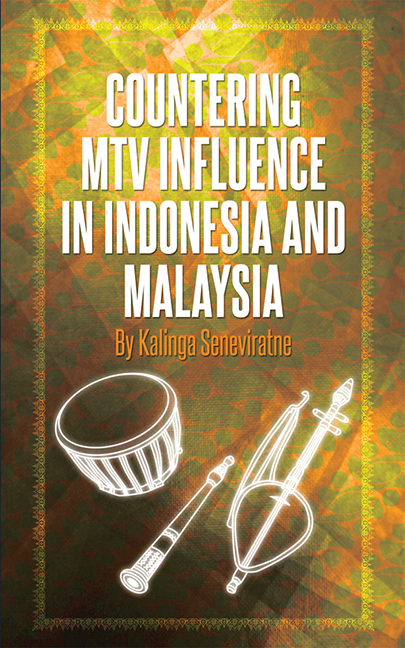Book contents
- Frontmatter
- Contents
- Preface
- 1 Introduction
- 2 Malay Cultural Landscape and Identity: Malaysia and Indonesia
- 3 Music, Islam, and Modern Cultural Identities
- 4 Pop Music, Cultural Imperialism, and Localization
- 5 Case Studies
- 6 Countering Cultural Imperialism: Theoretical Analysis
- References
- Index
- About the Author
2 - Malay Cultural Landscape and Identity: Malaysia and Indonesia
Published online by Cambridge University Press: 21 October 2015
- Frontmatter
- Contents
- Preface
- 1 Introduction
- 2 Malay Cultural Landscape and Identity: Malaysia and Indonesia
- 3 Music, Islam, and Modern Cultural Identities
- 4 Pop Music, Cultural Imperialism, and Localization
- 5 Case Studies
- 6 Countering Cultural Imperialism: Theoretical Analysis
- References
- Index
- About the Author
Summary
This chapter explores the cultural landscape of Malaysia and Indonesia, including the media landscape which has influenced cultural identities in the region. Both countries can be categorized as classic examples of postcolonial societies trying to build a common cultural identity.
Malaysia
Creating a Developed Nation
Malaysia is a country that has embarked upon an ambitious path to create a modern developed nation by 2020. The way the Malay identity is defined in this context is an important element in the development of this vision. Since this study is looking predominantly at the question of cultural identities of Malay youth, the main focus will be upon the Malay community.
Vision 2020 — known as Wawasan 2020 — was launched in February 1991 at the height of Malaysia's economic boom by Prime Minister Dr Mahathir Mohamad in a speech titled “Malaysia: The Way Forward”. This vision, which expects Malaysia to achieve the status of a fully-developed country by 2020 by accelerating industrialization and modernization, includes an explicit commitment to the forging of a Bangsa Malaysia (Malaysian Nation) that would transcend ethnic identities and loyalties.
Malaysian scholar M.K. Anuar (2000) claims that inherent in this “Mahathirist vision” “is the acceptance of the so-called modernising values replacing the ‘traditional’ ones that are regarded as stubborn hindrance to progress and prosperity”. He argues that in this modernizing mission there will occasionally be tension between the traditional and modern values arising mainly as a result of images and texts flowing into Malaysia rather freely from the outside world.
In his book titled The Malay Dilemma, Mahathir Mohamad (1970) argues that a vast majority of the Malays are too feudalist and wish to remain so. But the author claims that that mindset needs to be changed by a revolution. Two decades before launching Wawasan 2020, and even a decade before he became Prime Minister, Mahathir stated,
Essentially because of environmental and hereditary factors, the Malays have become a rural race with only a minute portion of them in the towns.[…]
- Type
- Chapter
- Information
- Countering MTV Influence in Indonesia and Malaysia , pp. 44 - 92Publisher: ISEAS–Yusof Ishak InstitutePrint publication year: 2012

